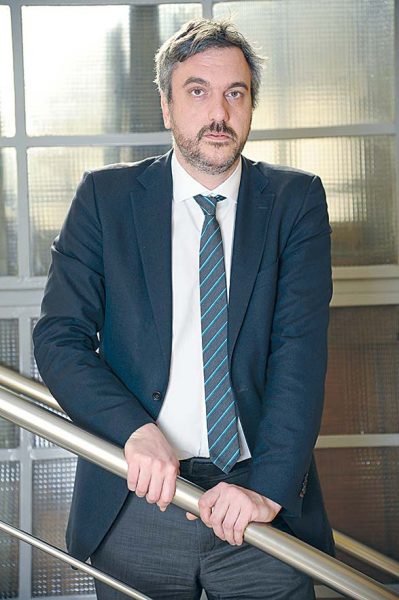If we wish to raise the technological level of our economy, it is important to secure favourable conditions to raise credit for the procurement of modern machinery and equipment, as well as support programmes for the digital transformation of traditional industry and the automation of their processes, to adapt our education systems to the needs of the labour market and encourage the use and production of green energy and transferring to the business models of the circular economy.
The structure of the economy can’t change overnight, nor even over the course of a year or two. But testifying to the progress achieved is the fact that that Serbia hasn’t only increased its sales fivefold on the international market in the last fifteen years, but has also significantly changed the structure of its export offer. While our lists of export commodities used to be dominated by raw materials and primary agricultural products, in the previous period we’ve seen a significant increase in the share of the processing industry and higher value-added goods, primarily in the form of motor vehicles, auto parts and electrical devices.
“The latest analyses of the editorial team of magazine Macroeconomic Economic Analysis and Trends are encouraging, as they indicate above-average growth in exports of high and medium technology products, and particularly exports of high-tech products,” says Marko Čadež, president of the Chamber of Commerce & Industry of Serbia.
Sales of high-tech products on the international market have increased almost 15-fold over the past decade and a half – from 77.4 million euros in 2005, to 1.16 billion euros last year. Exports of high and medium technological complexity products, which amounted to only 13.5% 15 years ago, today account for a third of Serbia’s total goods exports, according to these analyses.
Simultaneously, we are seeing constant increases in exports of Serbian services, and the surplus in exchanges of services with the outside world. Last year’s value of exported services was 2.5 times higher than it was ten years ago, while the surplus was 8 times higher.
The largest share and greatest contribution to that growth has been provided by IT services, the export performance of which – according to these data – increased from 171 million euros in 2011 to 1.3 billion euros in 2020, with average annual growth of 26 per cent.
Who instigated that change: was it exclusively foreign investors, or also innovative domestic companies?

– Foreign investors have, without a shadow of a doubt, provided a great contribution to reducing unemployment, increasing exports, changing the structure of exports and accelerating economic growth in the previous period.
For example, thanks to the investments of German companies, about 70,000 people have gained employment in Serbia, and today almost 90 per cent of our goods that are exported to the German market are industrial products, more than 80 per cent are goods with a higher degree of processing, and more than half are represented by machinery and devices. Foreign investments are also important because of the technologies, standards and business models that they transfer to our economy from the developed world. With the arrival of foreign investors, local companies receive market competition that encourages them to improve themselves, to strengthen their capacities. In striving to emulate foreign corporations, domestic firms adopt their technologies, standards and business management principles, becoming more capable of inclusion in global supply chains.
The structure of Serbia’s economy is also improved thanks to the contributions of large domestic business systems, some of which have dozens of companies in their structures and engage hundreds of local suppliers in their chain. The impact of their investments, as well as their influence on the development of the domestic economy, shouldn’t be undermined. Serbia’s largest business systems have announced individual investments of 50-plus million euros for this year alone.
However, it is equally important for the recovery and further growth of the economy as a whole to support healthy small and medium-sized companies as they continue investing in the expansion and development of their operations, to improve productivity and strengthen their companies and the competitiveness of their products.
One important step in strengthening links between the economy and science is the introduction of dual education to colleges, which will start this autumn
Sticking to foreign investors, when we observe the structure of foreign investments made in Serbia over the last two to three years, how many of them could we classify as being made by companies that bring medium- and higher-level technologies to our country?
– The vast majority are precisely those kinds of companies. The decrease in unemployment to a level below 10 per cent has enabled us to instigate a turnaround in the policy of incentivising foreign investments in recent years, for us to shift towards focusing more on attracting companies which, apart from creating new jobs, bring the latest technologies to Serbia and contribute to raising the technological level of our economy, creating products with added value and employing a highly educated workforce.
When it comes to attracting high-tech companies that increasingly decide to not only open factories in Serbia, but also to create their own research and development centres in our country, we have two key assets: people who are competitive, trained, skilled workers, top experts and world-renowned engineers; and a serious package of tax incentives for investing in research, development and innovation. Thanks to all of this, Serbia is on route to becoming one of Europe’s leading hubs for high-tech companies. Apart from Microsoft, which has had its regional development centre in Serbia for years, and NCR, which is finalising the largest technological campus in Europe here, there are companies like Continental, Draexlmaier, ZF Friedrichshafen, Brose, Nidec etc. that already have, or are set to establish, their own R&D centres in our country. Serbia has also been chosen as an investment and business destination in recent years by other leaders in their fields, such as Zumtobel, Toyo Tires, Fischer Automotive Systems, Barry Callebaut, MTU Aero Engines, Bizerba, Stadler etc.
What is suggested by the Smart Specialisation Strategy? When it comes to Serbia’s comparative advantages, were you surprised by the research that preceded this strategy?
– The industries marked as having the greatest development and export potential, in which we will direct future investments, are: the food industry (food for future); the manufacturing of technologically advanced machines and devices, including the automotive industry; and the ICT and creative industries. And there really were no surprises in that.

This was also confirmed by domestic analyses and recognised by foreign investors. For instance, the production of food products, together with the beverage and tobacco industries, attracted the most foreign direct investment over recent decades – representing 20 per cent of total FDI in the processing industry. The lion’s share of foreign investments over the last few years – viewed both on the basis of value and the number of realised projects – have been in the automotive and auto parts industry, which is particularly important when we consider the technologically intensive nature of producing cars, machinery and equipment, which carry greater added value and bring the possibility of greater industrial sophistication, and thus help improve the structure of exports by increasing the share of products with higher technological complexity.
When it comes to IT, this isn’t only the Serbian economy’s fastest-growing sector and one of its four leading industries, with growth of revenue and employment exceeding the economy’s standard level and annual export growth averaging 26 per cent, with top experts, software solutions and products that are recognised and used around the world. Rather it is also a sector that is an important asset when it comes to attracting high-tech companies from other sectors, but also a pillar of support for the domestic economy in the processes of transforming and advancing production and operational processes.
By relying increasingly on the IT sector and young, highly educated creative people, Serbia’s creative industries have been recording the continuous growth of added value and exports of newly registered companies and entrepreneurs over the last five or six years, to now exceed a GDP share of seven per cent. Apart from the production of video games and interactive media, the Serbian creative sector’s greatest potential lies in the field of audiovisual production, supported by state incentives for the shooting of foreign and domestic films and television series.
We are delighted that the Ministry of Economy has recognised our Centre for the Digital Transformation of the Economy as one of the partners for implementing measures to advance the digitalisation of industrial production
How does the Chamber of Commerce & Industry of Serbia contribute to strengthening the Serbian economy’s innovation potential?
– Apart from participating in the drafting of advanced business regulations, we also provide assistance to companies in applying innovations and strengthening their innovation potential and their ability to create their own innovations. And, perhaps most importantly, we help in securing better access to financing from corporate, state and European funds.
Apart from being the nexus in connecting science and the economy, we also work on the mutual networking of companies: connecting the technological, innovative start-up community with major companies; connecting the ICT sector with traditional industries; and connecting our high-tech companies with others around the world. Our objective is to connect companies that have capital and require innovative solutions to improve their production and operational processes with the innovative technological and scientific research community, which has ideas and solutions for the business challenges confronting the economy.
How do you envisage future cooperation between science and the economy?
– It is essential for science and research to be put in the function of economic and technological development by establishing stronger ties between the economy, R&D activities and investment capital. As such, it is important to change the attitude of science towards the economy and vice versa, and to establish a system that will ensure better communication, greater understanding and better coordination of all actors in the chain: from the state, via academia and individual innovators, to the business community.
Serbia has huge potential in the science and research sector, but that potential is not sufficiently utilised in the creating of new higher added value products and services.
A large number of projects that have been implemented at local universities and scientific institutes are only known to academic circles, i.e., they are rarely applied in domestic practises. Scientific research organisations are mainly financed from budgetary sources, only generating around a quarter of their total funding on the market, which is significantly below the EU average. In conjunction with that, the share of domestic private sector investment in R&D remains many times lower than is the case in the developed world. The solution lies in a strategic partnership between science and the economy that would be established and led by scientists and professors who understand business and by businesspeople who understand the importance of science and research. The economy expects the academic community to focus more on finding solutions to specific economic problems, while the university expects to receive information from the economy that will help direct it towards educational programmes and techniques that are aligned with the needs of companies. One important step in the strengthening of these links is the introduction of dual education to colleges, which will start this autumn.
| POTENTIAL Serbia has huge potential in the science and research sector, but that potential is not sufficiently utilised in the creating of new higher added value products and services | INCENTIVES We have two key assets when it comes to attracting high-tech companies that open their own R&D centres in our country: capable people and a serious package of tax incentives. | INNOVATIONS Our objective is to connect companies that have capital and require innovative solutions with the innovative technological and scientific research community |
|---|